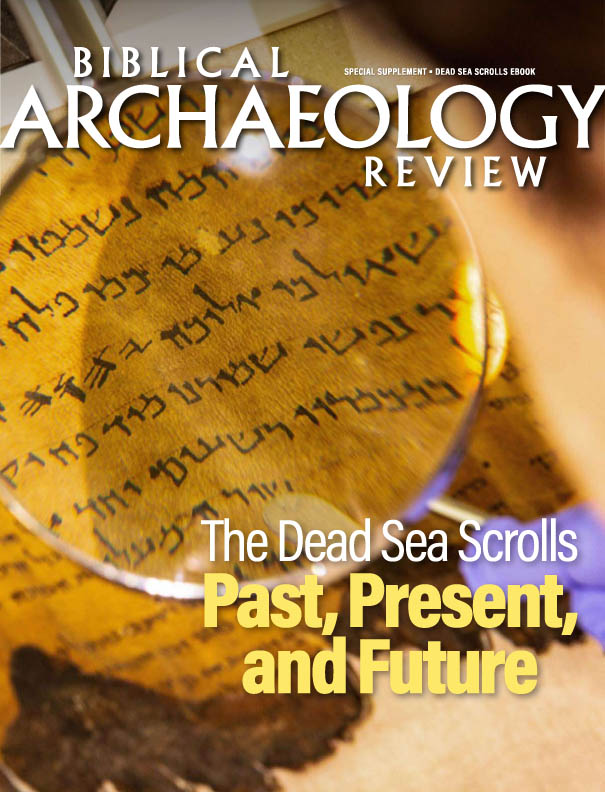
The Darius ostracon. A modern pedagogical exercise mistaken for an ancient inscription. Courtesy Shai Helevi, IAA.
Within 48 hours, a supposedly ancient ostracon containing the name of the Persian king Darius the Great went from being authenticated by leading experts to being identified as a modern forgery. This surprising series of events is a stark reminder of the dangers and pitfalls involved in authenticating ancient artifacts that lack a secure archaeological context. How did such a mistake happen?

The Darius Ostracon: From Authentic to Fake
On an unusually warm spring morning, the Israel Antiquities Authority (IAA) made a thrilling announcement: the discovery of an object they claimed was the “first discovery of an inscription bearing Darius the Great’s name anywhere in the Land of Israel.” The inscription, incised on a pottery sherd (or ostracon), contained the words “Year 24 (of) Darius” written in Aramaic, a date that would correspond to 498/7 BCE.
The ostracon, which was found by two hikers on the surface of the site of Tel Lachish in southern Israel, was quickly reported to the IAA, where it was examined by Haggai Misgav, an expert on Aramaic, and Sa’ar Ganor, an archaeologist who studies Lachish. “Before I was completely happy, I went to do tests in the labs of the Antiquities Authority,” Ganor told Bible History Daily in a Hebrew language interview when the find was first announced. “We photographed it with the same camera that takes photos of the stored [Dead Sea] Scrolls. We ran it through the analytical laboratory, to know if this is an authentic object.” After numerous tests at the IAA’s Dead Sea Scrolls laboratory, the scholars were convinced the object was authentic. There was just one problem. They were wrong.
Shortly after the official announcement, the IAA was contacted by an Aramaic expert who had been excavating at Tel Lachish the previous summer. While on-site, she presented to a group of students how ancient ostraca were made. Following her teaching demonstration, she accidentally left one of her examples behind, an example so good that it completely fooled two leading scholars and a host of laboratory tests.
Following the revelation, the IAA quickly released a retraction, taking “full responsibility for the unfortunate event.” Meanwhile, the excavation team that left behind the object told Bible History Daily, “Everybody involved acted in a very responsible way to correct this mistake and be as transparent as possible.”
The Darius Ostracon: A Mistake That Shouldn’t Have Happened
Despite the IAA’s retraction, some scholars say the unfortunate situation serves as an excellent example of the dangers and challenges involved in authenticating objects found outside of the excavation trench and highlights the problem of announcing finds before they are fully vetted. Christopher Rollston, Professor of Northwest Semitic Languages and Literatures at George Washington University, points out that “an incised inscription on a potsherd is the simplest of all kinds of modern forgeries, and it can be among the more difficult to detect.” Indeed, Rollston pointed to the case of the infamous Moussaieff Ostraca, “both of which are modern forgeries” but were originally authenticated as genuine Iron Age inscriptions.
It is precisely due to the challenges of authentication that scholars need to use caution when studying unprovenanced objects. “Laboratory testing is useful, but it is not the panacea that some in the humanities believe it is,” said Rollston. “After all, some labs have authenticated objects which are, in fact, modern forgeries. And, of course, through the years, some very fine epigraphers have been duped by some modern forgeries.”
Others contend that the object should have been more thoroughly vetted and discussed before the IAA’s announcement. “For finds not from scientific excavations and surveys, a very high standard of analytic techniques is to be used for authenticity,” said Aren Maeir, Professor of Archaeology at Bar Ilan University. “At sites where there is more than one project being carried out (in Lachish there are three), I would recommend discussing finds between the projects, before publication.” Maeir and other prominent Israeli archaeologists recently signed a public declaration insisting that such finds be presented in peer-reviewed publications before being announced to the public.
As Rollston notes, a higher level of scrutiny by everyone involved would have no doubt raised several difficult-to-answer questions about the object. “What are the chances of someone finding on the surface of a tel (a tel that has been carefully excavated, and a tel which archaeologists and ordinary people are walking around on all the time) a sensational find mentioning a famous Persian king, the likes of which have never appeared previously in Israel, despite intensive excavations in the area for more than a century? Not high.”
He added that this lack of scrutiny could have had real implications for our understanding of the ancient past. “What if the archaeologist who made this piece had not come forward?” asked Rollston. “We could end up writing histories and citing inscriptions in those histories, and in part basing some of what we say on something that is a modern forgery.”
Yonatan Adler, Associate Professor of Archaeology and Judaism at Ariel University, perhaps best expressed the lessons that archaeologists should take from the situation. “We should be skeptical about how good we are at identifying ancient [artifacts and inscriptions] as authentic. This forgery was created in good faith. The next one won’t be.”
Ed. Note: Christopher Rollston is a member of the Editorial Advisory Board of Biblical Archaeology Review. The IAA’s Archaeological Division could not be reached for comment on this story.
Read more in Bible History Daily:
Is the “Brother of Jesus” Inscription on the James Ossuary a Forgery?
All-Access members, read more in the BAS Library:
Clumsy Forger Fools the Scholars—But Only for a Time
Not a BAS Library or All-Access Member yet? Join today.The post The Darius Ostracon: From Real to Fake appeared first on Biblical Archaeology Society.

0 Commentaires